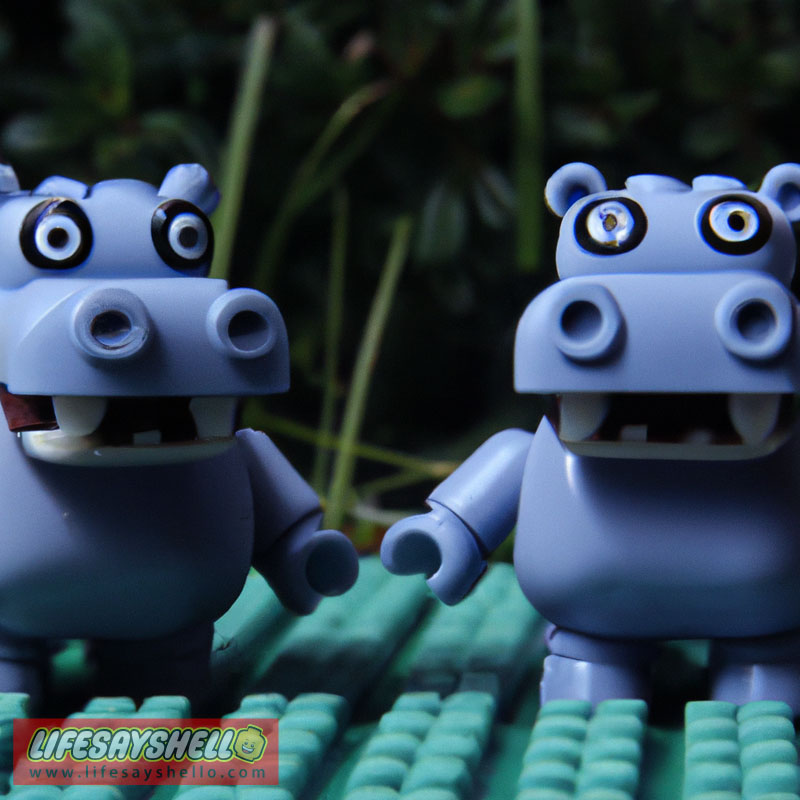How Were Humans Created? Unraveling the Mysteries of Human Evolution for Young Minds

Ever wondered where we came from and how we got here? Human evolution is a fascinating and complex story, and with each new discovery, we uncover a small piece of the puzzle. Get ready for a deep dive into the mysterious world of our ancestors and their journey towards becoming modern Homo sapiens.
Introduction
Hello, curious minds! Have you ever looked at your friends, family, or even yourself and wondered, "How did humans come to be?" Well, you're not alone. People have been pondering our origins for centuries. One thing that most scientists agree on, though, is that human evolution is an epic journey full of twists and turns.
So, strap in and let's explore the amazing world of our ancestors and their path towards becoming the Homo sapiens we know today.
1. The Emergence of Hominins
Now, when you look around, you'll see a world full of diverse and amazing humans. But, did you know that our ancestors had an even more diverse family tree? To understand how we came to be, we need to go way back—like, way back—around 315,000 years ago. That's when the first members of our own species, Homo sapiens, began to appear.
Scientists have discovered many fossils belonging to early human species called "hominins." Hominins included not only our direct ancestors, but also various cousins who shared some of our traits but didn't necessarily contribute to our gene pool.
Some of them might even sound like something straight out of a sci-fi movie: Australopithecus, Paranthropus, and Homo habilis. Don't get too intimidated by the fancy names, though, because these folks were more like us than you might think.
2. The Evolution of Bipedalism
Ready for a weird fact? Humans are the only primates that walk around on two legs. Sounds strange, right? But bipedalism is actually one of the key traits that separate us from our ape cousins. This wasn't always the case, though. Our ancestors had to go through some serious changes to adapt to life on two legs.
Around 3.5 million years ago, a hominin species known as Australopithecus afarensis (say that five times fast!) was already pretty good at walking upright. How do we know that? Meet "Lucy," a famous fossil found in Ethiopia that showed early signs of bipedalism. Lucy and her kind had a combination of ape-like and human-like features. But why did they start walking on two legs?
Well, that's where it gets a little tricky. There are a bunch of theories out there, and none of them have been completely proven. Some believe that bipedalism helped early humans see over tall grasses while others think it made it easier to carry objects (like food, tools, or even babies). However, one thing's for sure: walking on two legs played a big role in the evolution of our species.
3. Tool-Making and Technological Advancements
You know how our world is full of fancy gadgets and mind-blowing technology? Well, our ancestors were pretty innovative too. They might not have had computers or smartphones, but they developed awesome tools to help them survive and thrive in their environment.
As early as 2.5-2.1 million years ago, our ancient relatives were already crafting things like chipped flake tools and core choppers. No, we're not talking about kitchen gadgets—these were tools made by striking rocks together in such a way that they created sharp-edged cutting and scraping tools. This was a big deal, as it marked the first steps in humans' unique ability to manipulate our surroundings.
As time went on, our ancestors became even more skilled at tool-making. They learned to create more sophisticated tools and even figured out how to make fire. And with the development of more complex tools came substantial changes in the structure of early human communities and their ability to adapt to different environments.
4. The Evolutionary Lineage of Homo sapiens
Understanding how early hominins went through the process of becoming modern Homo sapiens is not an easy task. It requires a lot of puzzle-solving, digging up fossils, analyzing genetic material, and crossing fingers that everything fits together neatly in the end. Spoiler alert: it usually doesn't!

Scientists are constantly learning new things about our ancestors and their evolution. But what we do know is that over hundreds of thousands of years, our hominin ancestors developed a unique combination of traits, like bipedalism and tool-making, which ultimately led to the formation of our own species.
And the journey doesn't stop there, as our species continued to change and adapt over time. The more we study our past, the more we learn about ourselves and our place in the world.
5. Language and Communication
One of the most extraordinary aspects of being a human being is our ability to communicate through language. Have you ever stopped to think about how incredible it is that we can convey complex ideas and emotions using words, gestures, or even written symbols? Our ancestors didn't always have this advanced linguistic ability, but it was a crucial factor in the development of our species.
The emergence of language is still a bit of a mystery, but it's thought to have evolved gradually over time. Early humans probably used simple gestures and sounds to communicate, which eventually evolved into more complex vocal and gestural patterns.
Language allowed our ancestors to share knowledge and cooperate in ways never before possible, enabling them to form complex social structures, pass information between generations, and solve problems more efficiently. This eventually paved the way for the development of culture, art, religion, and countless other uniquely human traits.
6. The Role of Art and Creativity
Speaking of culture, a fascinating aspect of human evolution is our deep-rooted affinity for art and creativity. Throughout history, humans have expressed themselves through various forms of artistic expression, from cave paintings and sculptures to music and dance.
The earliest known artworks date back to around 40,000 years ago and provide yet another intriguing glimpse into the lives of our ancestors. These early artists used natural materials, like charcoal and ochre, to create stunning depictions of animals, handprints, and abstract designs.
Why did humans start creating art? There are several theories, including using it as a form of communication, for religious or spiritual purposes, or simply for personal expression. One thing is clear, though: art has played a crucial role in human evolution, serving as a powerful medium for expressing our unique connection with the world and each other.
7. The Formation of Societies and Cultural Diversity
As our ancestors developed language, art, and other forms of communication, they were able to form more complex social structures. This eventually led to the formation of organized societies, each with its own distinct culture, values, and traditions.
Throughout history, human societies have developed in various ways, resulting in the rich cultural diversity we see today. Different geographic locations, climatic conditions, and available resources have all played a role in shaping the ways in which human communities interact, cooperate, and evolve.
Understanding the development and diversity of human cultures can help us appreciate not only our shared history but also the differences that make our world such an amazing and varied place.
8. The Future of Human Evolution
So, where do we go from here? Will humans continue to evolve, or have we reached a unique endpoint in our evolutionary journey? The truth is, no one really knows for sure, but it's thrilling to think about the possibilities.
Many scientists believe that humans are still evolving, and indeed, the potential for change and adaptation is evident in our rapidly advancing technological and scientific advances. Some predict that the future of human evolution may include genetic manipulation, merging with artificial intelligence, or even extending our reach to colonize other planets.
The possibilities are endless, and as we continue to learn more about our past and adapt to present challenges, one thing is clear: the future of human evolution is in our hands, and it's up to us to create a brighter tomorrow through our collective imagination and thirst for knowledge.
Conclusion
So, there you have it: an eye-opening glimpse into the epic tale of human evolution. Even though there's still a lot we don't know, the journey to discover the mysteries of our past is just as fascinating as the discoveries themselves. Don't be afraid to dig deeper, ask questions, and never lose curiosity about our incredible origins. After all, an understanding of our evolutionary journey may just be the key to unlocking the mysteries of our future.
Feeling inspired to learn more about human history? There are countless resources out there to help younger folks develop a deeper understanding of our complex past. But be warned: once you start exploring, you might just find it hard to stop!




Comments